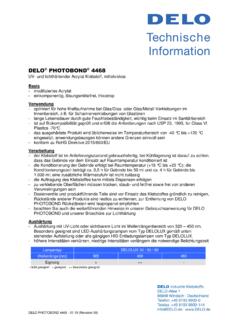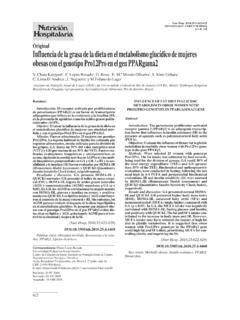Transcription of Zynq Architecture - 國立中興大學
1 zynq Architecture zynq Version This material exempt per Department of Commerce license exception TSU Copyright 2012 Xilinx Objectives After completing this module, you will be able to: Identify the basic building blocks of the zynq Architecture processing system (PS). Describe the usage of the Cortex-A9 processor memory space Connect the PS to the programmable logic (PL) through the AXI ports Generate clocking sources for the PL peripherals List the various AXI-based system architectural models Name the five AXI channels Describe the operation of the AXI streaming protocol zynq Architecture 12-2 Copyright 2012 Xilinx Outline zynq All Programmable SoC (AP SoC). zynq AP SoC Processing System (PS). Processor Peripherals Clock, Reset, and Debug Features AXI Interfaces Summary zynq Architecture 12-3 Copyright 2012 Xilinx zynq -7000 Family Highlights Complete ARM -based processing system Application Processor Unit (APU).
2 Dual ARM Cortex -A9 processors Caches and support blocks Fully integrated memory controllers I/O peripherals Tightly integrated programmable logic Used to extend the processing system Scalable density and performance Flexible array of I/O. Wide range of external multi-standard I/O. High-performance integrated serial transceivers Analog-to-digital converter inputs zynq Architecture 12-4 Copyright 2012 Xilinx zynq -7000 AP SoC Block Diagram zynq Architecture 12-5 Copyright 2012 Xilinx The PS and the PL. The zynq -7000 AP SoC Architecture consists of two major sections PS: Processing system Dual ARM Cortex-A9 processor based Multiple peripherals Hard silicon core PL: Programmable logic Shares the same 7 series programmable logic as Artix -based devices: Z-7010 and Z-7020 (high-range I/O banks only).
3 Kintex -based devices: Z-7030 and Z-7045 (mix of high-range and high-performance I/O banks). zynq Architecture 12-6 Copyright 2012 Xilinx ARM Processor Architecture ARM Cortex-A9 processor implements the ARMv7-A Architecture ARMv7 is the ARM Instruction Set Architecture (ISA). ARMv7-A: Application set that includes support for a Memory Management Unit (MMU). ARMv7-R: Real-time set that includes support for a Memory Protection Unit (MPU). ARMv7-M: Microcontroller set that is the smallest set The ARMv7 ISA includes the following types of instructions (for backwards compatibility). Thumb instructions: 16 bits; Thumb-2 instructions: 32 bits NEON: ARM's Single Instruction Multiple Data (SIMD) instructions ARM Advanced Microcontroller Bus Architecture (AMBA ) protocol AXI3: Third-generation ARM interface AXI4: Adding to the existing AXI definition (extended bursts, subsets).
4 Cortex is the new family of processors ARM family is older generation; Cortex is current; MMUs in Cortex processors and MPUs in ARM. zynq Architecture 12-7 Copyright 2012 Xilinx ARM Cortex-A9 Processor Power Dual-core processor cluster DMIP/MHz per processor Harvard Architecture Self-contained 32KB L1 caches for instructions and data External memory based 512KB L2 cache Automatic cache coherency between processor cores 800-MHz operation (fastest speed grade). zynq Architecture 12-8 Copyright 2012 Xilinx Outline zynq All Programmable SoC (AP SoC). zynq AP SoC Processing System (PS). Processor Peripherals Clock, Reset, and Debug Features AXI Interfaces Summary zynq Architecture 12-9 Copyright 2012 Xilinx ARM Cortex-A9 Processor Micro- Architecture Instruction pipeline supports out-of- order instruction issue and completion Register renaming to enable execution speculation Non-blocking memory system with load-store forwarding Fast loop mode in instruction pre-fetch to lower power consumption zynq Architecture 12-10 Copyright 2012 Xilinx ARM Cortex-A9 Processor Micro- Architecture Variable length, out-of-order, eight-stage.
5 Super-scalar instruction pipeline Advanced pre-fetch with parallel branch pipeline enabling early branch prediction and resolution Multi-issued into Primary data processing pipeline Secondary full data processing pipeline Load-store pipeline Compute engine (FPU/NEON) pipeline Speculative execution Supports virtual renaming of ARM physical registers to remove pipeline stalls due to data dependencies Increased processor utilization and hiding of memory latencies Increased performance by hardware unrolling of code loops Reduced interrupt latency via speculative entry to Interrupt Service Routine (ISR). zynq Architecture 12-11 Copyright 2012 Xilinx PS Components Application processing unit (APU). I/O peripherals (IOP).
6 Multiplexed I/O (MIO), extended multiplexed I/O (EMIO). Memory interfaces PS interconnect DMA. Timers Public and private General interrupt controller (GIC). On-chip memory (OCM): RAM. Debug controller: CoreSight zynq Architecture 12-12 Copyright 2012 Xilinx Processing System Interconnect (1). Programmable logic to memory Two ports to DDR. One port to OCM SRAM. Central interconnect Enables other interconnects to communicate Peripheral master USB, GigE, SDIO connects to DDR and PL. via the central interconnect Peripheral slave CPU, DMA, and PL access to IOP. peripherals zynq Architecture 12-13 Copyright 2012 Xilinx Processing System Interconnect (2). Processing system master Two ports from the processing system to programmable logic Connects the CPU block to common peripherals through the central interconnect Processing system slave Two ports from programmable logic to the processing system zynq Architecture 12-14 Copyright 2012 Xilinx Memory Map The Cortex-A9 processor uses 32-bit addressing All PS peripherals and PL peripherals are memory mapped to the Cortex-A9 processor cores All slave PL peripherals will be located between 4000_0000 and 7 FFF_FFFF (connected to GP0) and 8000_0000 and BFFF_FFFF (connected to GP1).
7 zynq Architecture 12-15 Copyright 2012 Xilinx zynq AP SoC Memory Resources On-chip memory (OCM). RAM. Boot ROM. DDRx dynamic memory controller Supports LPDDR2, DDR2, DDR3. Flash/static, memory controller Supports SRAM, QSPI, NAND/NOR FLASH. zynq Architecture 12-16 Copyright 2012 Xilinx PS Boots First CPU0 boots from OCM ROM; CPU1 goes into a sleep state On-chip boot loader in OCM ROM (Stage 0 boot). Processor loads First Stage Boot Loader (FSBL) from external flash memory NOR. NAND. Quad-SPI. SD Card JTAG; not a memory device used for development/debug only Boot source selected via package bootstrapping pins Optional secure boot mode allows the loading of encrypted software from the flash boot memory zynq Architecture 12-17 Copyright 2012 Xilinx Configuring the PL.
8 The programmable logic is configured after the PS boots Performed by application software accessing the hardware device configuration unit Bitstream image transferred 100-MHz, 32-bit PCAP stream interface Decryption/authentication hardware option for encrypted bitstreams In secure boot mode, this option can be used for software memory load Built-in DMA allows simultaneous PL configuration and OS memory loading zynq Architecture 12-18 Copyright 2012 Xilinx Outline zynq All Programmable SoC (AP SoC). zynq AP SoC Processing System (PS). Processor Peripherals Clock, Reset, and Debug Features AXI Interfaces Summary zynq Architecture 12-19 Copyright 2012 Xilinx Input/Output Peripherals Two GigE. Two USB. Two SPI.
9 Two SD/SDIO. Two CAN. Two I2C. Two UART. Four 32-bit GPIOs Static memories NAND, NOR/SRAM, Quad SPI. Trace ports zynq Architecture 12-20 Copyright 2012 Xilinx Multiplexed I/O (MIO). External interface to PS I/O peripheral ports 54 dedicated package pins available Software configurable Automatically added to bootloader by tools Not available for all peripheral ports Some ports can only use EMIO. zynq Architecture 12-21 Copyright 2012 Xilinx Extended Multiplexed I/O (EMIO). Extended interface to PS I/O peripheral ports EMIO: Peripheral port to programmable logic Alternative to using MIO. Mandatory for some peripheral ports Facilitates Connection to peripheral in programmable logic Use of general I/O pins to supplement MIO pin usage Alleviates competition for MIO pin usage zynq Architecture 12-22 Copyright 2012 Xilinx PS-PL Interfaces AXI high-performance slave ports (HP0-HP3).
10 Configurable 32-bit or 64-bit data width Access to OCM and DDR only Conversion to processing system clock domain AXI FIFO Interface (AFI) are FIFOs (1KB) to smooth large data transfers AXI general-purpose ports (GP0-GP1). Two masters from PS to PL. Two slaves from PL to PS. 32-bit data width Conversation and sync to processing system clock domain zynq Architecture 12-23 Copyright 2012 Xilinx PS-PL Interfaces One 64-bit accelerator coherence port (ACP) AXI slave interface to CPU memory DMA, interrupts, events signals Processor event bus for signaling event information to the CPU. PL peripheral IP interrupts to the PS general interrupt controller (GIC). Four DMA channel RDY/ACK signals Extended multiplexed I/O (EMIO) allows PS peripheral ports access to PL logic and device I/O pins Clock and resets Four PS clock outputs to the PL with enable control Four PS reset outputs to the PL.





